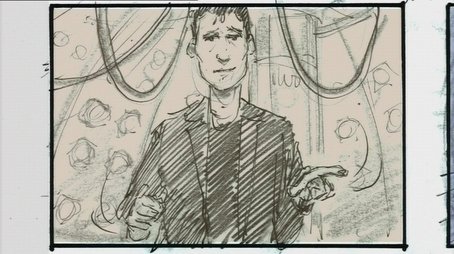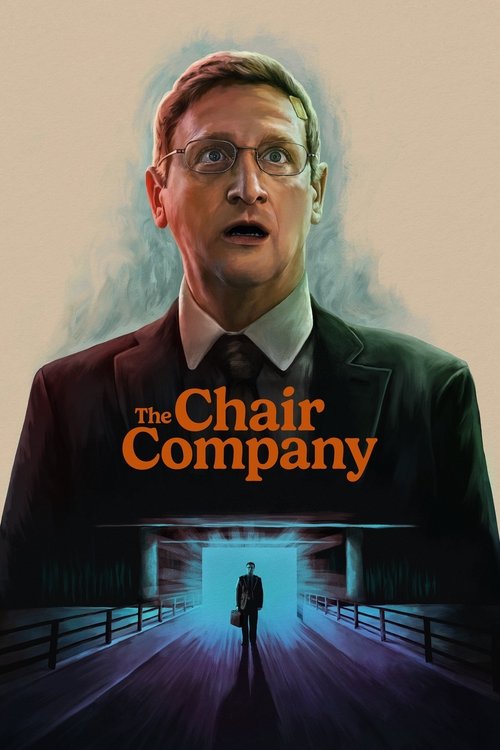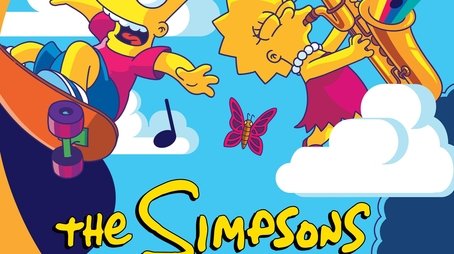
Ask Your Own Question
What is the plot?
"Doctor Who Trailer Storyboard" is a unique episode that serves as a behind-the-scenes look at the making of the Doctor Who series, specifically focusing on the promotional trailer for the 2005 revival. The episode does not follow a traditional narrative structure with a plot, characters, and conflicts but instead presents a series of storyboard sequences that outline the visual and thematic elements intended for the trailer.
The episode begins with a series of sketches that depict the Doctor, played by Christopher Eccleston, in various iconic poses and settings. The first storyboard frame shows the Doctor standing confidently in front of the TARDIS, the time machine that is central to the series. The image captures his adventurous spirit and hints at the mysteries that lie ahead.
As the storyboard progresses, the next sequence illustrates the Doctor in a dramatic confrontation with a group of alien creatures. The sketches emphasize the tension of the moment, showcasing the Doctor's determination and bravery. The accompanying notes highlight the emotional stakes, suggesting that the Doctor is fighting not just for his own survival but for the safety of others.
The following frames depict the Doctor interacting with his companion, Rose Tyler, played by Billie Piper. Their dynamic is illustrated through a series of sketches that capture their growing bond. The storyboards convey a sense of excitement and curiosity as they explore new worlds together, with notes indicating the importance of their relationship in the series.
In another sequence, the storyboards show the Doctor facing a moral dilemma, with sketches that depict his internal struggle. The notes emphasize the weight of his decisions, hinting at the consequences that come with being a Time Lord. This moment is crucial as it sets the tone for the character's complexity and the challenges he will face throughout the series.
The episode continues with a series of action-packed storyboard frames, showcasing thrilling sequences such as the Doctor running from an explosion and navigating through a chaotic alien landscape. Each frame is filled with dynamic movement, and the accompanying notes describe the intended pacing and energy of the trailer, aiming to capture the audience's attention.
As the storyboard nears its conclusion, the final frames depict a climactic moment where the Doctor stands triumphant, having overcome the challenges presented to him. The sketches illustrate a sense of hope and resilience, reinforcing the themes of adventure and heroism that are central to Doctor Who.
The episode wraps up with a montage of the various storyboards, highlighting the visual style and emotional depth that the creators aimed to achieve in the trailer. The final notes reflect on the excitement surrounding the revival of Doctor Who, setting the stage for the adventures that await viewers in the upcoming series.
What is the ending?
The ending of "Doctor Who Trailer Storyboard" features a montage of scenes that showcase the Doctor's adventures, emphasizing the excitement and mystery of time travel. The Doctor, portrayed by Christopher Eccleston, stands resolute, ready to face whatever challenges lie ahead. The trailer concludes with a sense of anticipation for the new adventures to come, leaving viewers eager for the series to begin.
In a more detailed narrative, the ending unfolds as follows:
The storyboard culminates in a series of dynamic and visually striking scenes that encapsulate the essence of "Doctor Who." The Doctor, a Time Lord with a deep sense of curiosity and a strong moral compass, is depicted in various settings, each more thrilling than the last.
Scene 1: The Doctor stands in the TARDIS, the iconic blue police box, which is both a time machine and a spacecraft. The interior is filled with glowing controls and a sense of wonder. His expression is one of determination and excitement, reflecting his readiness to embark on new adventures. The camera zooms in on his face, capturing the spark of life in his eyes, hinting at the myriad of experiences he has yet to encounter.
Scene 2: The storyboard transitions to a bustling cityscape, where the Doctor races through the streets, dodging pedestrians and vehicles. His urgency is palpable, driven by a need to save someone or something. The vibrant colors of the city contrast with the darker undertones of the challenges he faces, symbolizing the duality of hope and danger that permeates his travels.
Scene 3: A quick cut shows the Doctor confronting a menacing alien creature. The tension is high as he stands his ground, showcasing his bravery and quick thinking. The alien, with its grotesque features and threatening posture, represents the external conflicts the Doctor must navigate. The Doctor's resolve is evident as he prepares to outsmart the creature, embodying the show's theme of intelligence over brute force.
Scene 4: The storyboard shifts to a serene moment where the Doctor interacts with a companion, a key aspect of his journey. Their laughter and camaraderie highlight the importance of friendship and support in the face of adversity. This scene serves to remind viewers that the Doctor is not alone; he is part of a larger narrative that includes those who travel with him.
Scene 5: The final moments of the storyboard bring the Doctor back to the TARDIS. He stands at the controls, a look of contemplation on his face. The TARDIS begins to dematerialize, swirling with light and energy, symbolizing the endless possibilities that lie ahead. As the camera pulls away, the iconic sound of the TARDIS engines fills the air, leaving viewers with a sense of wonder and anticipation.
In this ending, the Doctor's fate is one of continued adventure and exploration. He is portrayed as a hero who embraces the unknown, driven by a desire to protect and discover. The companions, though not explicitly named in this storyboard, are implied to be integral to his journey, sharing in the triumphs and trials that await them. The emotional weight of the ending lies in the promise of new stories, challenges, and the enduring spirit of adventure that defines "Doctor Who."
Is there a post-credit scene?
In the episode "Doctor Who Trailer Storyboard," there is no post-credit scene. The episode primarily serves as a behind-the-scenes look at the making of the Doctor Who trailer, showcasing the creative process and the storyboard elements that contributed to the revival of the iconic series. It focuses on the visual storytelling techniques and the emotional resonance intended for the audience, rather than providing additional narrative content or a continuation of the story. The episode concludes without any additional scenes or teasers following the credits.
What characters are featured in the Doctor Who Trailer Storyboard?
The Doctor, portrayed by Christopher Eccleston, is the central character featured in the storyboard. Additionally, Rose Tyler, played by Billie Piper, appears prominently alongside the Doctor, showcasing their dynamic relationship.
What visual elements are highlighted in the Doctor Who Trailer Storyboard?
The storyboard emphasizes various iconic visual elements such as the TARDIS, which is depicted in its blue police box form, and various alien landscapes that hint at the adventures the Doctor and Rose will embark on. The use of vibrant colors and dynamic angles captures the excitement and mystery of the series.
How does the Doctor's personality come across in the storyboard?
The Doctor's personality is portrayed as adventurous and charismatic, with moments of humor and intensity. His expressions and body language in the storyboard convey a sense of urgency and determination, reflecting his role as a protector of time and space.
What emotional tone is established in the Doctor Who Trailer Storyboard?
The emotional tone of the storyboard oscillates between excitement and tension. Scenes depict moments of danger and adventure, interspersed with quieter, more reflective moments that hint at the Doctor's deeper emotional struggles and connections with Rose.
Are there any notable plot hints or foreshadowing in the storyboard?
Yes, the storyboard includes visual hints of future conflicts and challenges, such as shadowy figures and ominous landscapes that suggest the presence of adversaries. These elements foreshadow the Doctor's encounters with various foes and the overarching themes of danger and heroism in the series.
Is this family friendly?
The episode "Doctor Who Trailer Storyboard" is primarily a behind-the-scenes look at the making of the Doctor Who series, focusing on the creative process and visual storytelling. As such, it does not contain traditional narrative elements that might be objectionable. However, there are a few aspects to consider:
-
Mild Scares: The trailer may include brief glimpses of monsters or alien creatures that could be startling for younger viewers or those sensitive to frightening imagery.
-
Intense Themes: The overall tone of Doctor Who often involves themes of danger, loss, and adventure, which might be intense for some children.
-
Emotional Moments: There may be scenes that evoke strong emotions, such as sadness or tension, which could be upsetting for sensitive viewers.
Overall, while the episode is family-friendly, it is advisable for parents to be aware of these elements when considering it for younger audiences.











